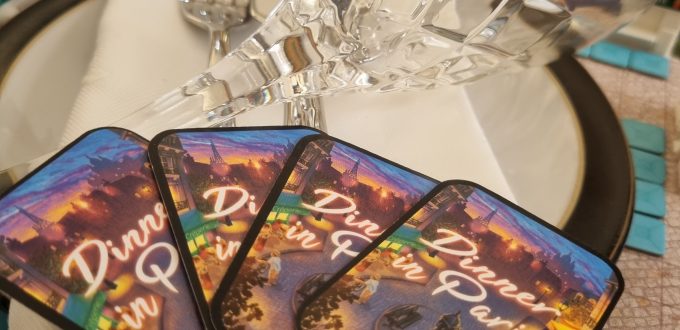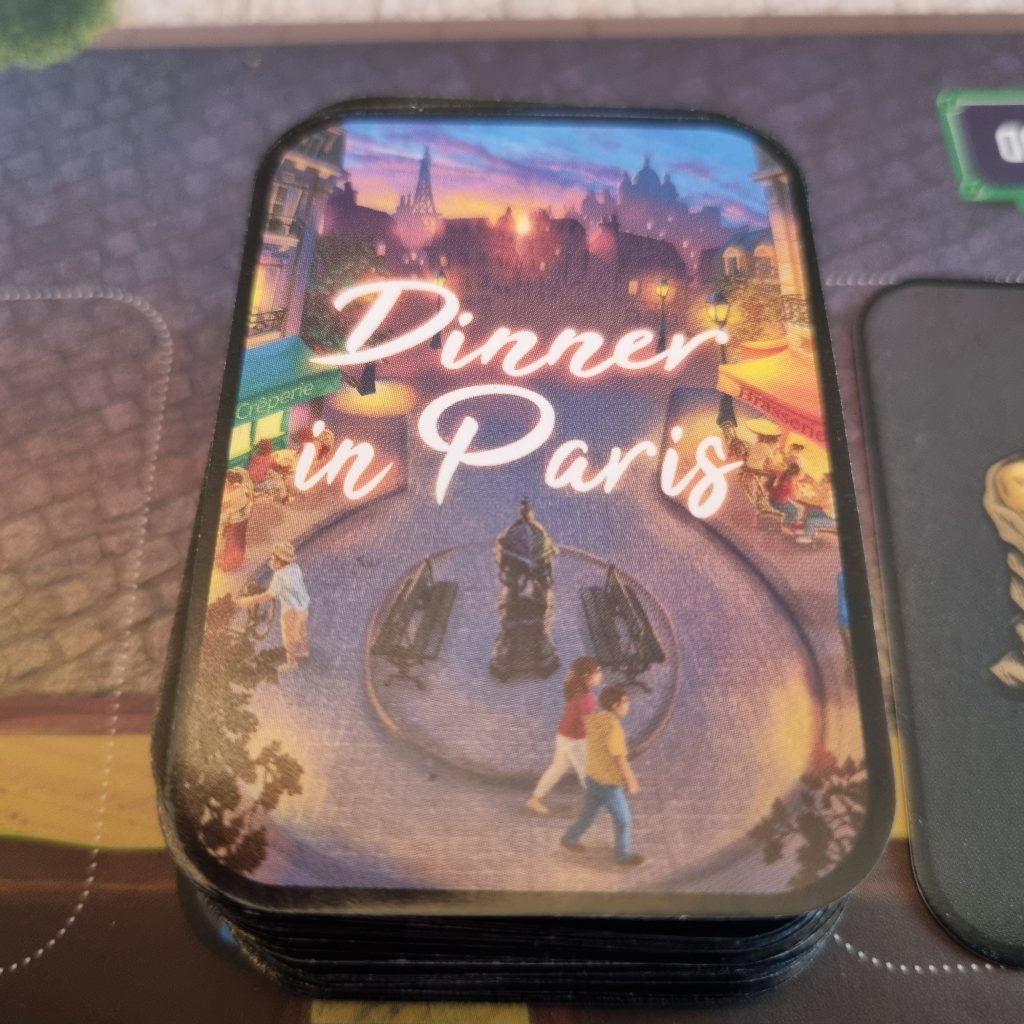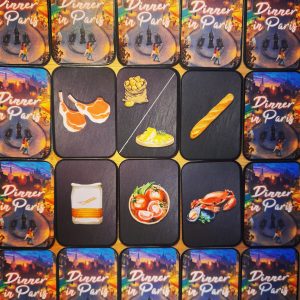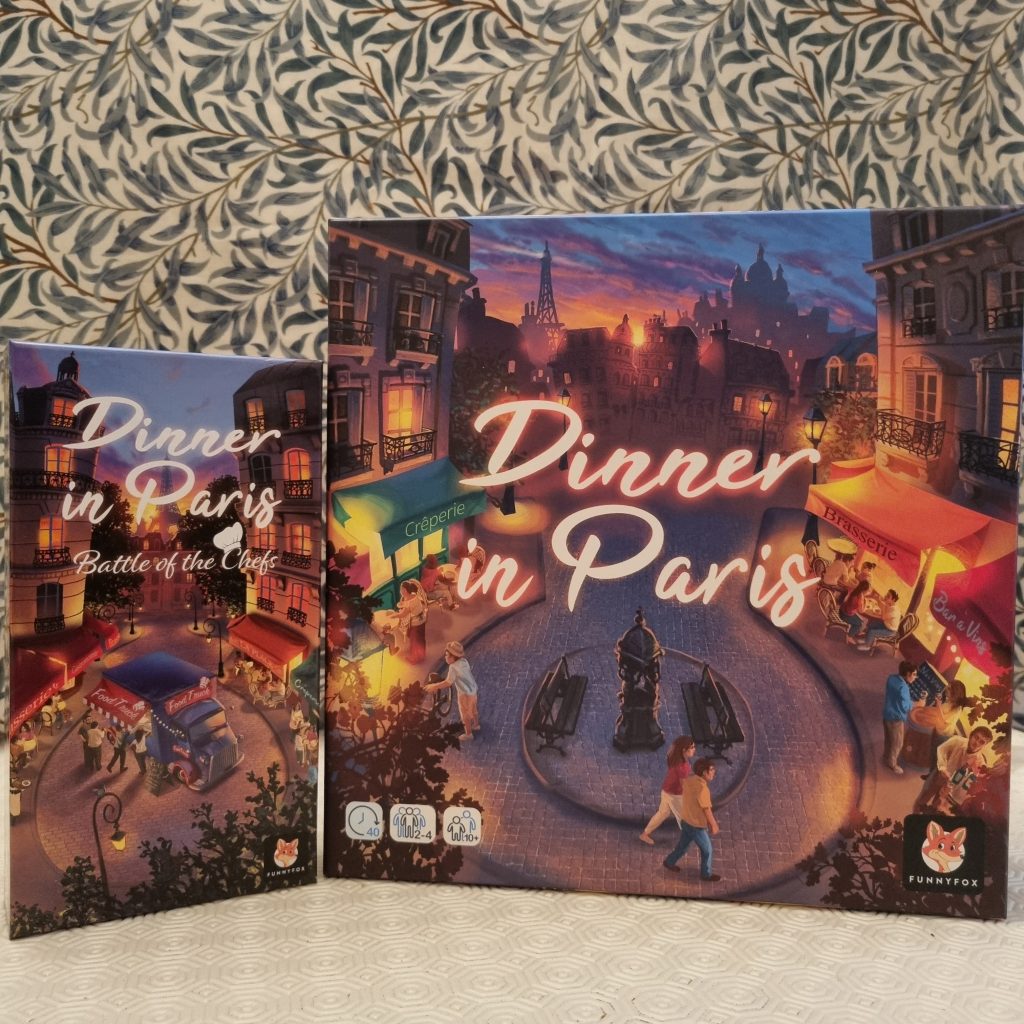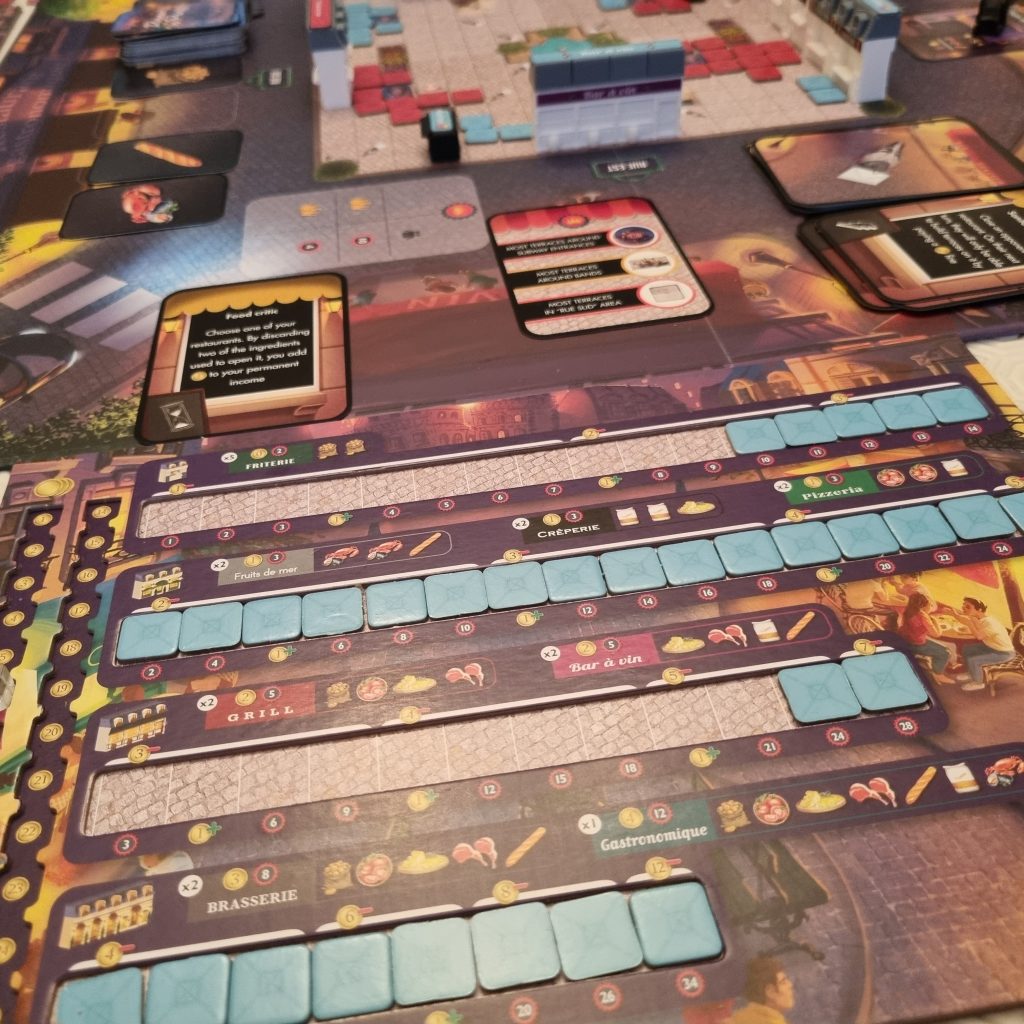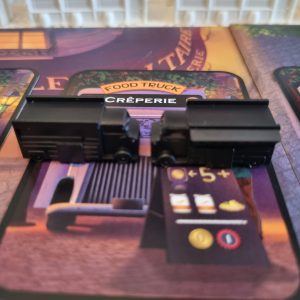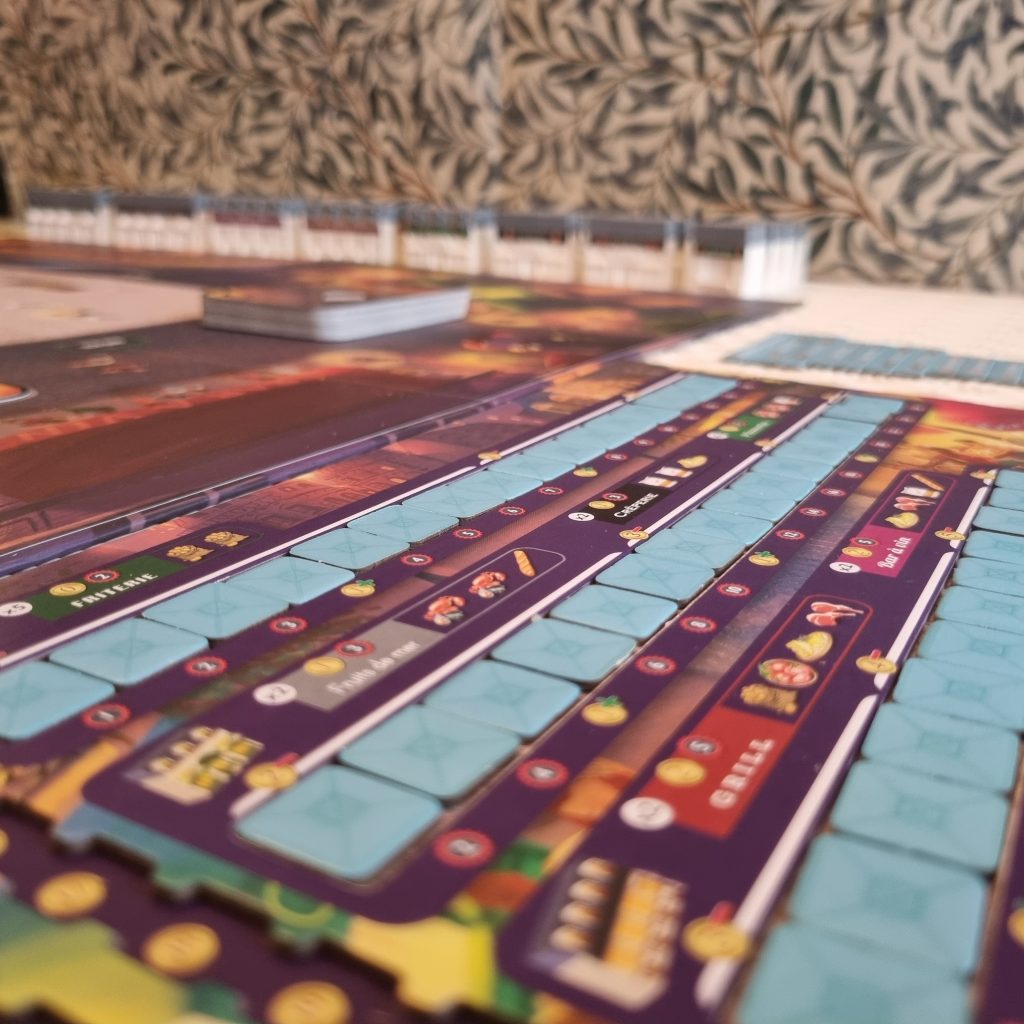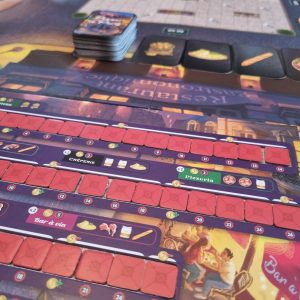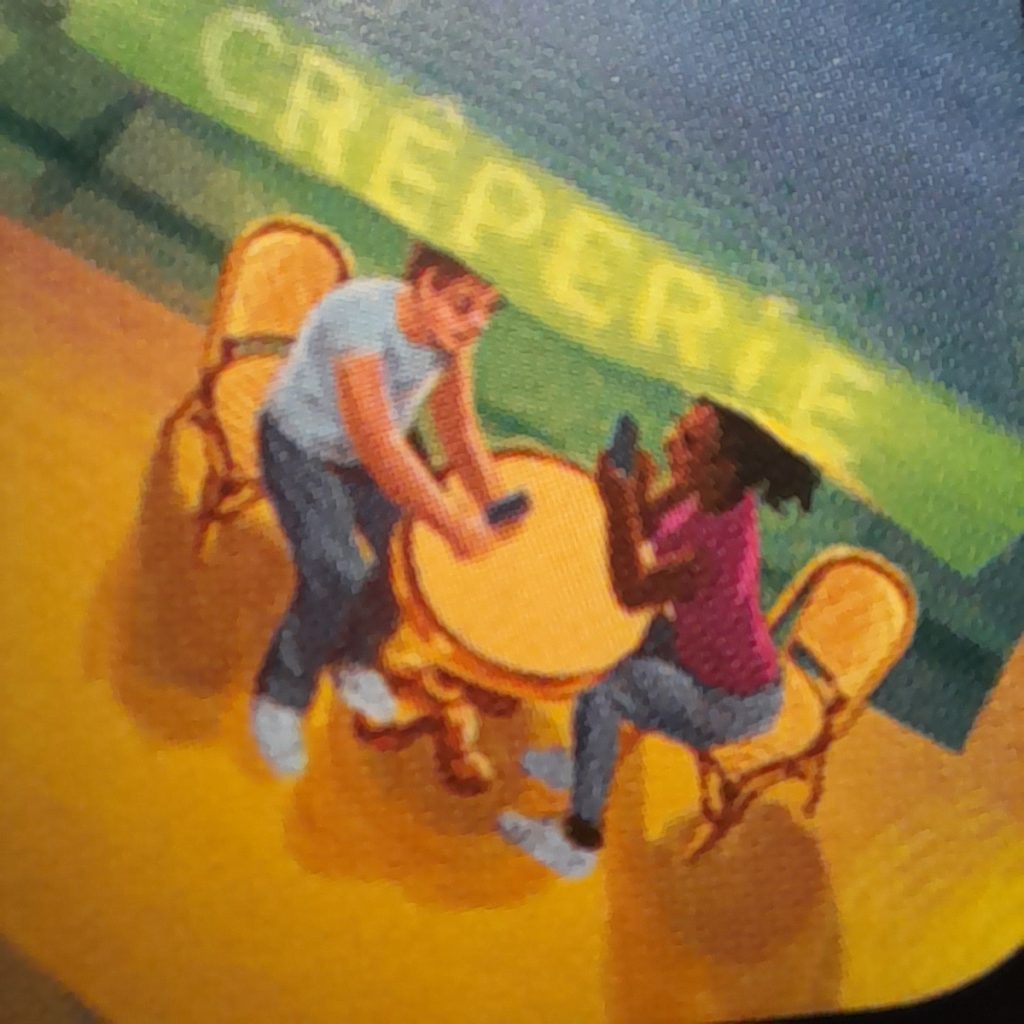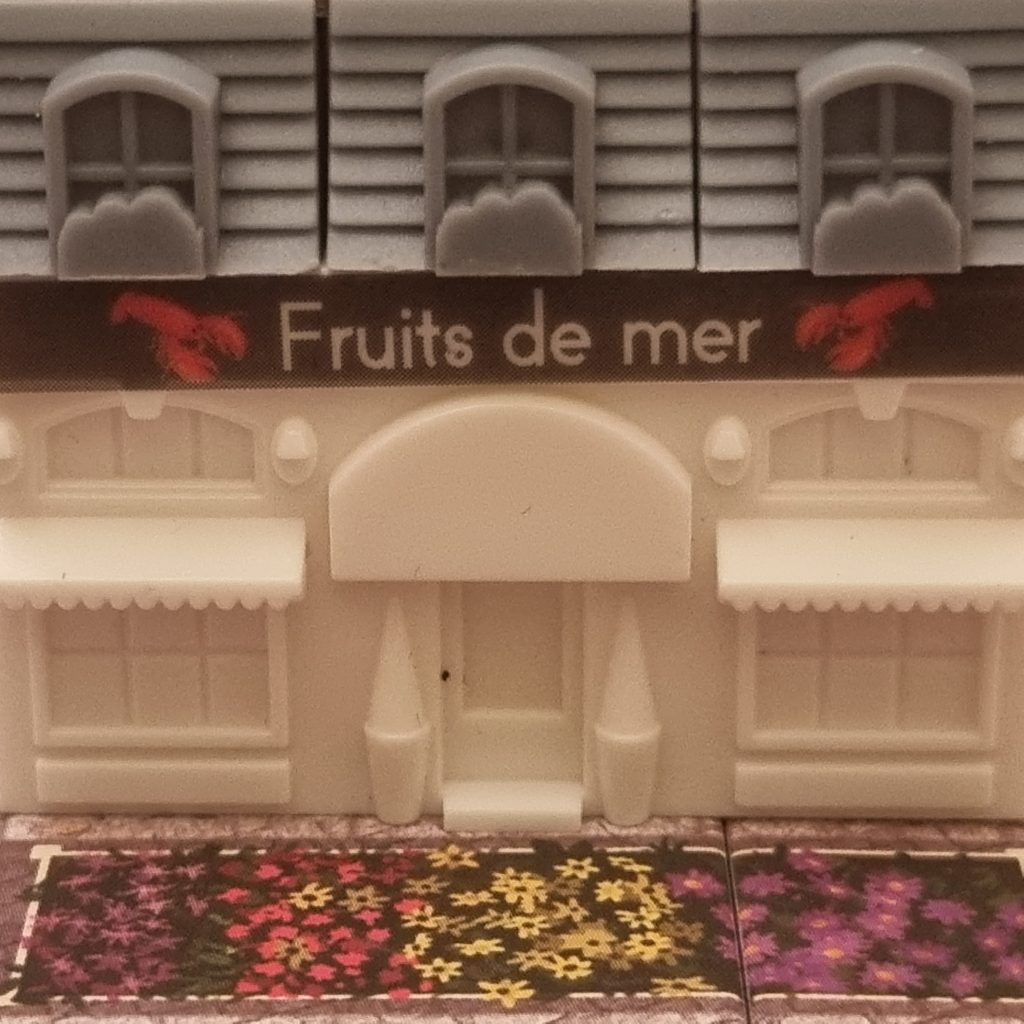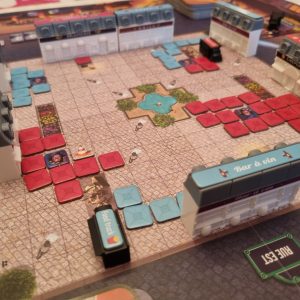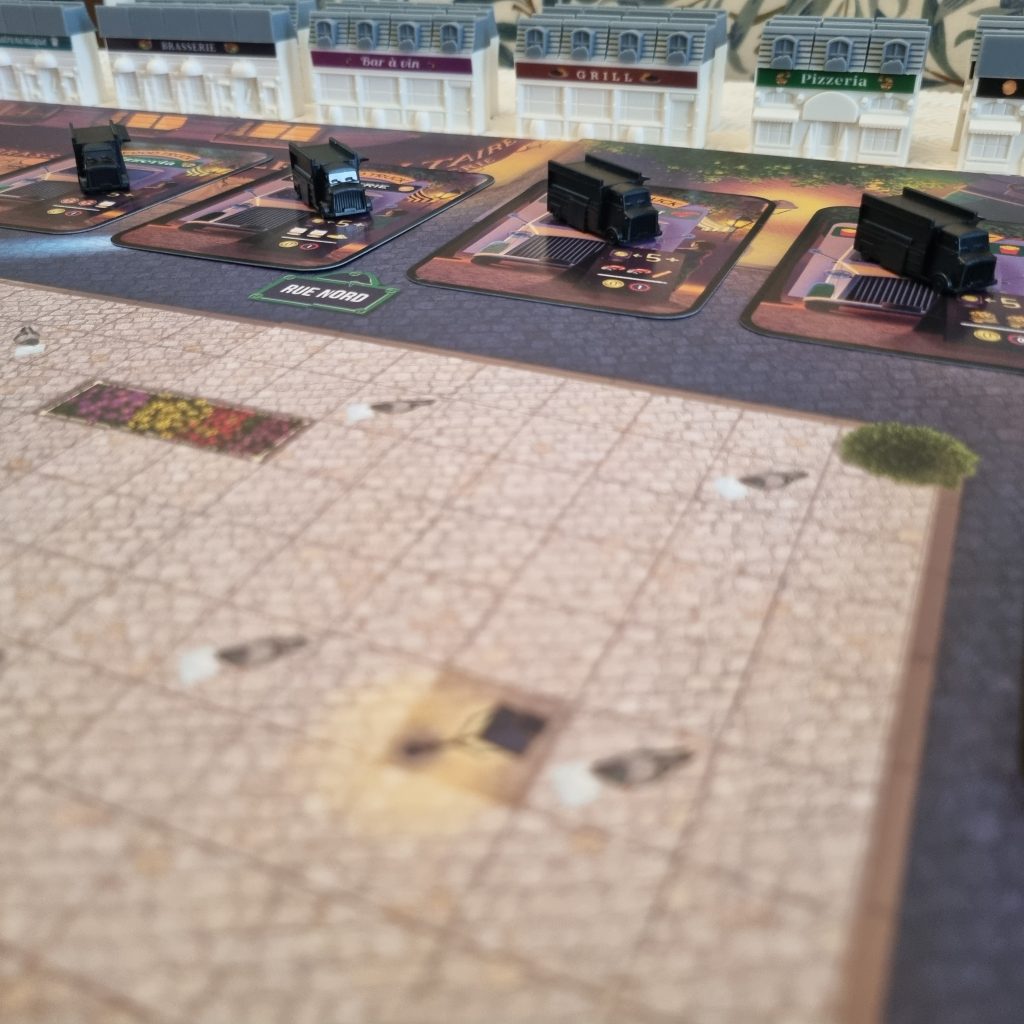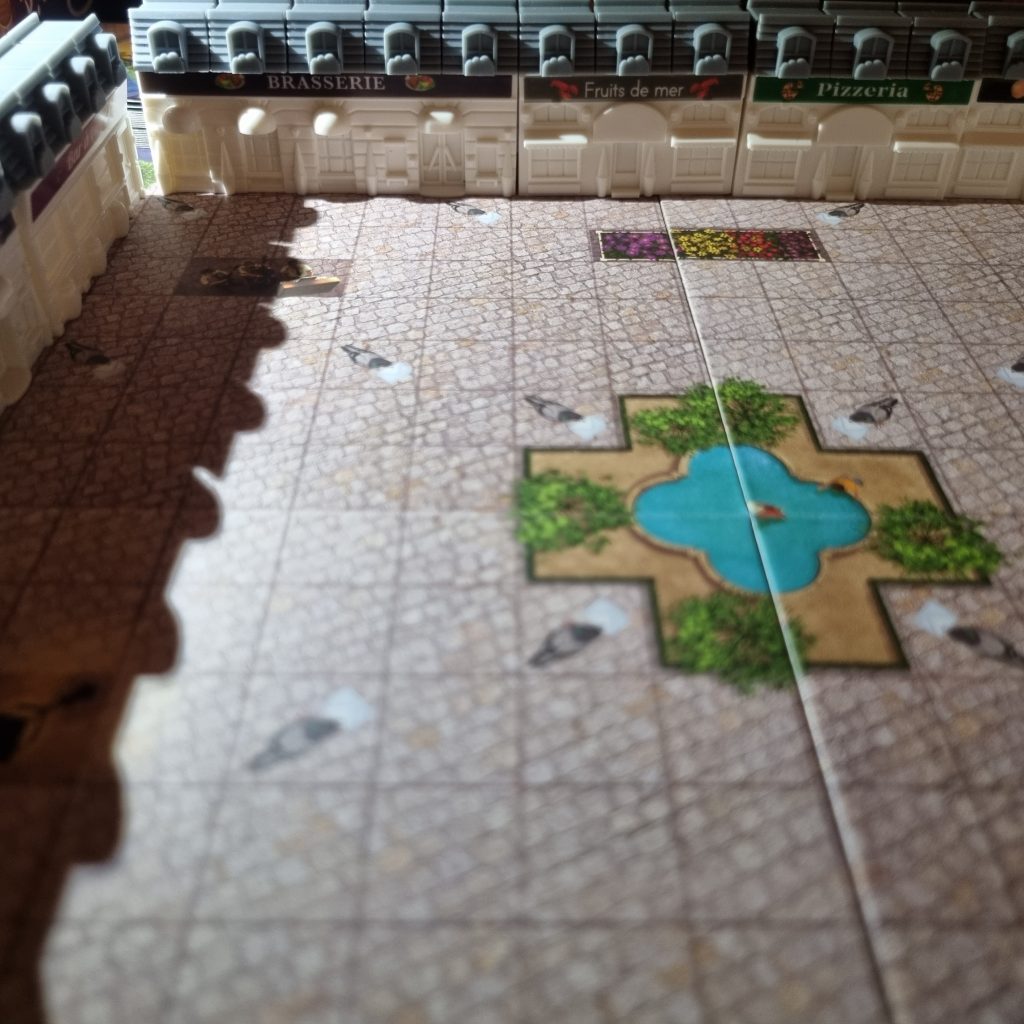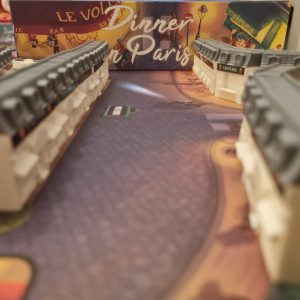Set the table for you are in for a tasty treat. Dinner in Paris by Funnyfox and Hachette Board Games UK is on the menu tonight!
Publisher: Funnyfox Games, Hachette Board Games UK
Designer: The Trolls
Artist: Alain Boyer
Release date: 2020 (Expansion 2021)
2-4 Players
Age: 8+
40-60 mins
*Area Majority * tile laying * Strategy * Scoring Objectives * Set Collection * Hand Management * Direct Player Interaction * Pattern Matching * Race * End Game Bonuses * Strategy *
Favouritefoe score: 9/10
Cheese, baguettes, wine………my belt is already straining at the thought.
The heady aroma and tastes of the romance capital of the world are renowned. In fact, you are probably never more than a baguette’s length away from a food outlet in Paris! But have you ever wondered what it’s like to actually own one of those bistros or creperies?
Well wonder no more. Print your menus and polish your charm. Welcome, everyone, to Dinner in Paris! I am also going to cover the brilliant Battle of the Chefs expansion. But I’ll focus on the base game first, and then let you know what the other bits bring to the table!
Palette Pleasing Puzzle!
The goal in Dinner in Paris is simple; build restaurants and expand your terraces to gain area majorities and fulfil spatial objectives that award tasty VPs at the end of the game. The rules and set up are also très facile. But, with so many delicious ways to become the Baron of bistros, it is a truly palette pleasing puzzle!
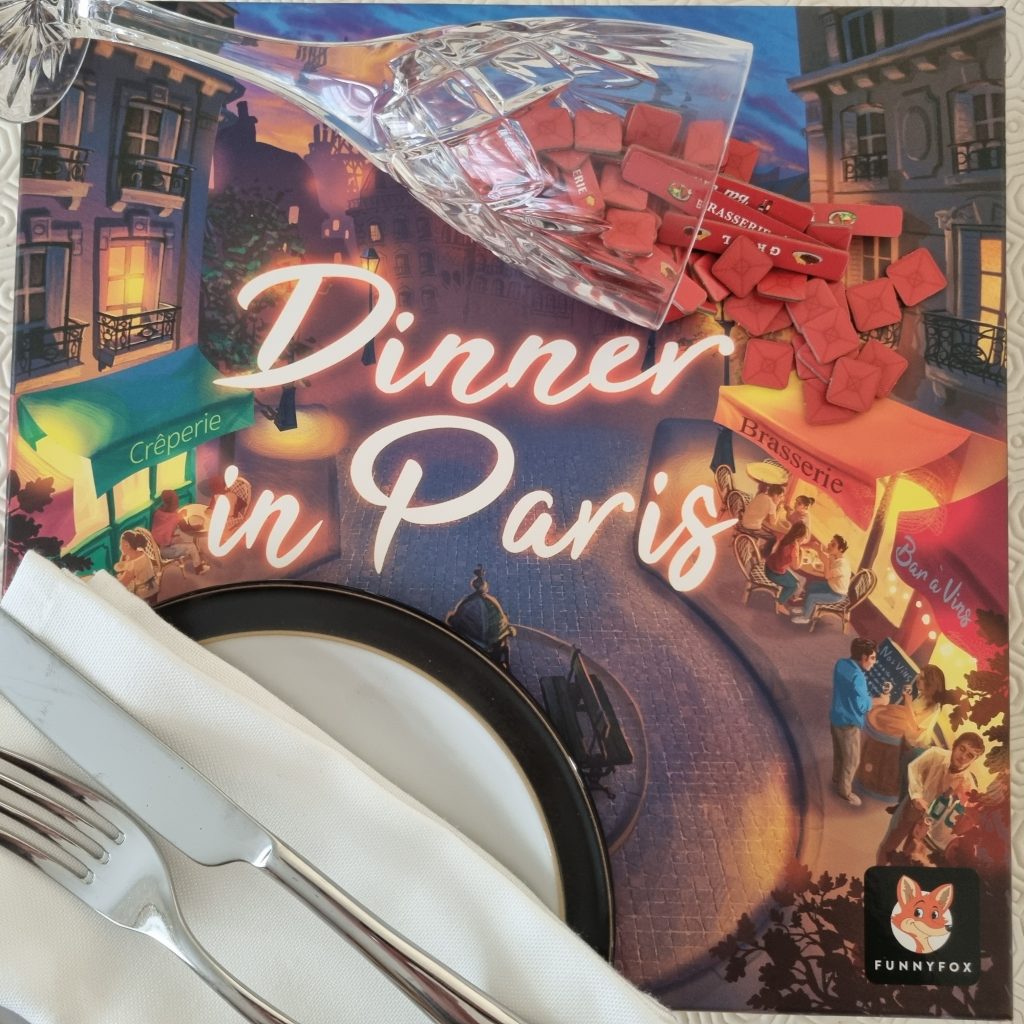
Setting the Table!
Making sure you are using the right side of the main board (one is specifically for two players), you need to shuffle the food resource cards, objective cards, area majority cards, and pigeon cards and place them on the designated spots, turning over as many as is required depending on player count. And oh yes, I said it. PIGEON cards. Believe me, those sky rats make their mark on your gameplay (even more so in the expansion – but more on that later!). Also place the 3D buildings (precise number depending on player count) within easy reach.
Everyone then gets their own player board, 52 little square terrace tiles (which are placed in the linear slots in the recessed board), 1 yellow income tracker cube, 1 white expenses tracker cube, and 18 restaurant name tiles. You also get a hand of four resources cards and 2 objective cards. But you don’t get to keep both objectives. Pick one and then form a discard pile with the scraps alongside the objective card draw pile.
And that’s it. It’s time to get tasting!
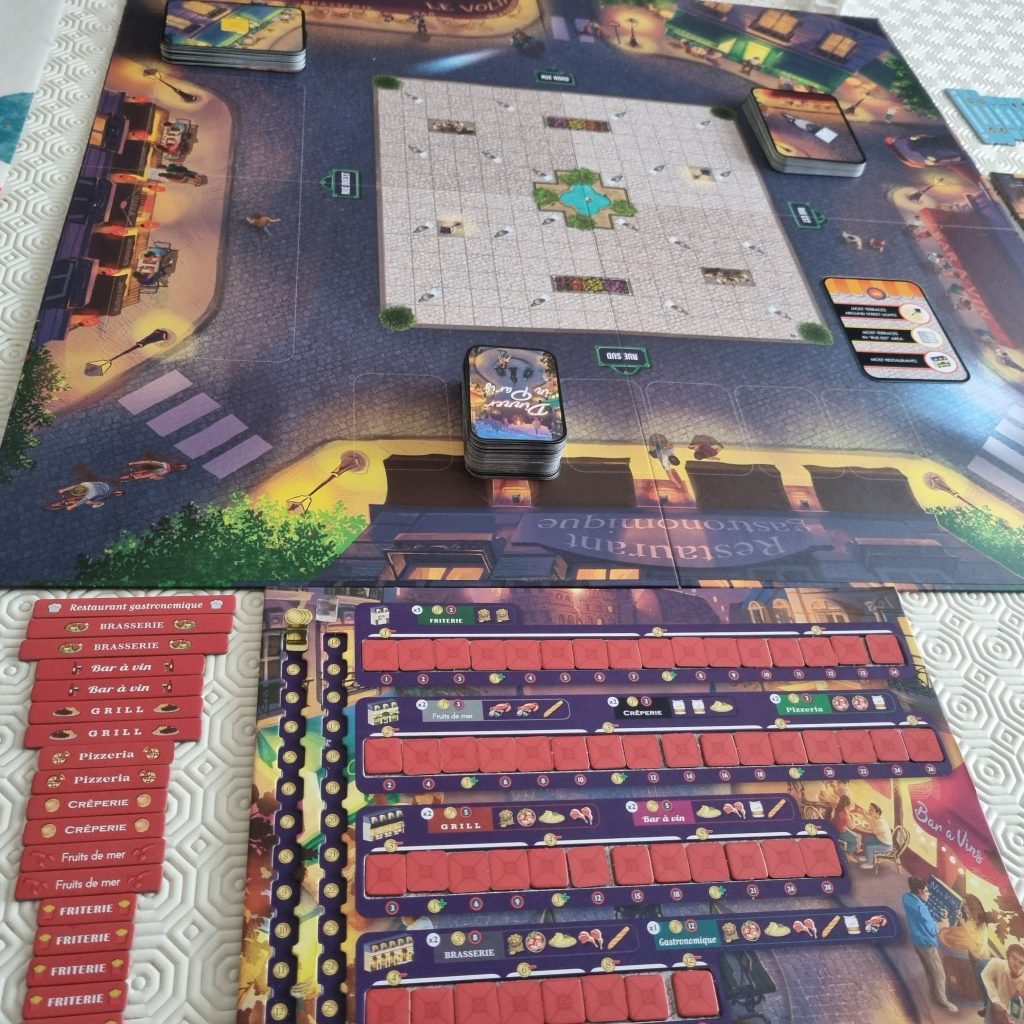
Tasty Turns!
Every turn in Dinner in Paris consists of three actions. The first is always to draw a new resource card (either from those four on show or a random from the stack), and then you get two free choices (same or different) from the following: –
- Draw another resource card;
- Open a restaurant;
- Build a terrace; or
- Satisfy an objective (either your own or a common one)
Food Glorious Food!
Resource cards are essential. They are the delicious ingredients (and coins – not income) you need to open a restaurant. And restaurants make permanent income (and points!) so you are going to want to get them up and running as fast as you can. No point having an eatery that doesn’t make any money – those terraces can be pricey patios!
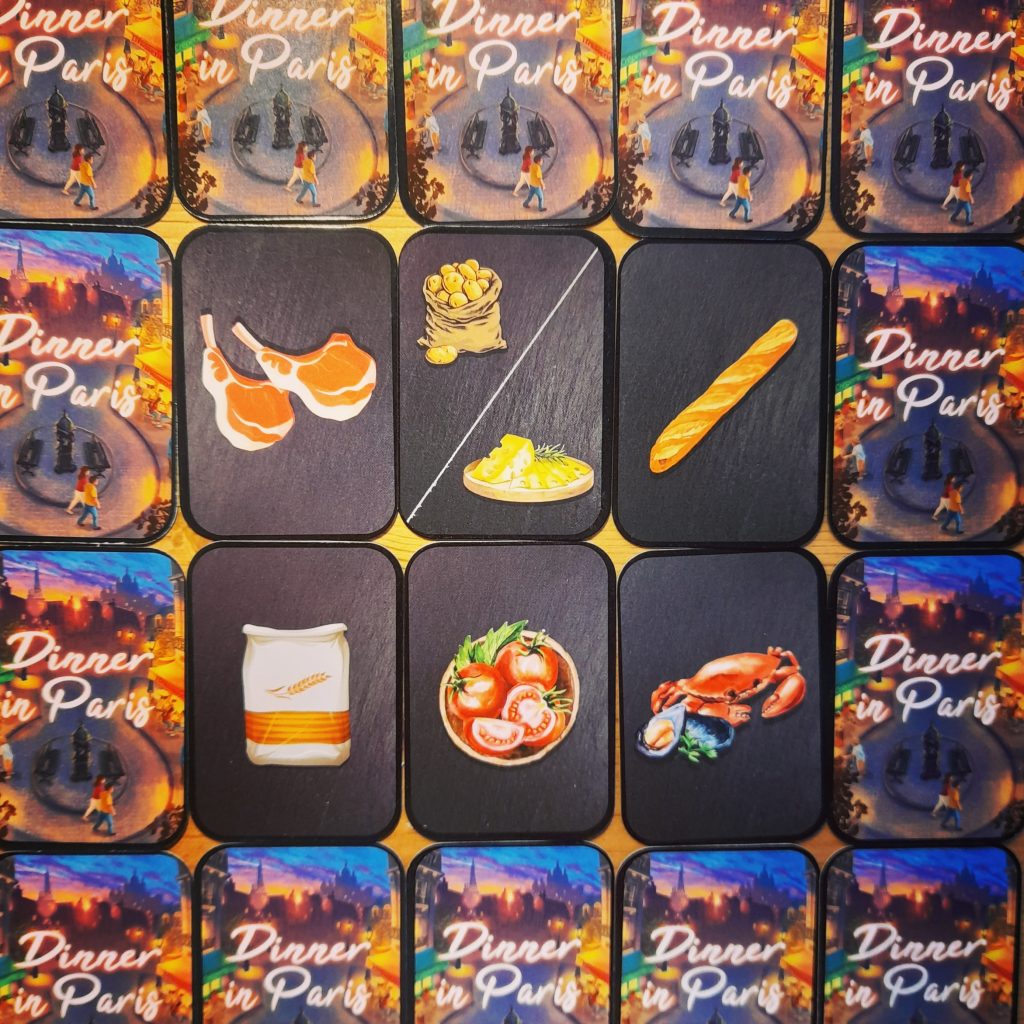
Raising Restaurants!
Your player board shows the “cost” for each type of restaurant, and these increase as the values and sizes go up. So e.g. a small 2 space friterie needs just two bags of potatoes to fire up those fryers. If you have some spuds in your hand, you can discard them and take the 3D friterie building. Choosing where around the edge of the Plaza you want to place it, you then pop your friterie restaurant name tile on the roof of the building to show that it is yours. Be aware that you can never have more than 7 juicy titbits in your hand by the end of your turn. So don’t go too heavy on those fancy flavours, or you’ll be throwing good food away!
Les Grandes Terrasses!
Once you have some restaurants up and running, you can then choose the build terrace action on your turn. If you have some disposable income, that is. Terraces are essential for completing the scoring objectives and winning majorities. Some also give you income bonuses. And again, the cost of each terrace tile is shown on your player board.
Note that they are removed from left to right from the row showing the restaurant in front of which you are building.
You have to place them in front of the restaurant. Tiles belonging to the same restaurant must also be placed orthogonally. And once you start filling up the Plaza with your terrace tiles, you have to be sure to avoid two restaurant terraces touching – whether your own or that of your opponents. Your diners expect some privacy when they chow down!
There can be some diagonal proximity, and you can even allow your terraces to spill out in front of other players’ restaurants if you think it will help you (or mess with them!). Oh and if you squash a sky-rat, ahem, I mean cover up a pigeon icon with a tile, you get to take a pigeon card. Okay, so they are actually very handy, and you will want them. They grant you extra goodies or bonus turn options after all. But I have been the victim of way too much high altitude guano drops to make feathered friends with them!
I accept the terrace tile placement sounds a little confusing, but it makes sense when you’re playing. And the rule book has some handy infographics to help those who, like me, are perhaps on the more spatially challenged end of the spectrum!
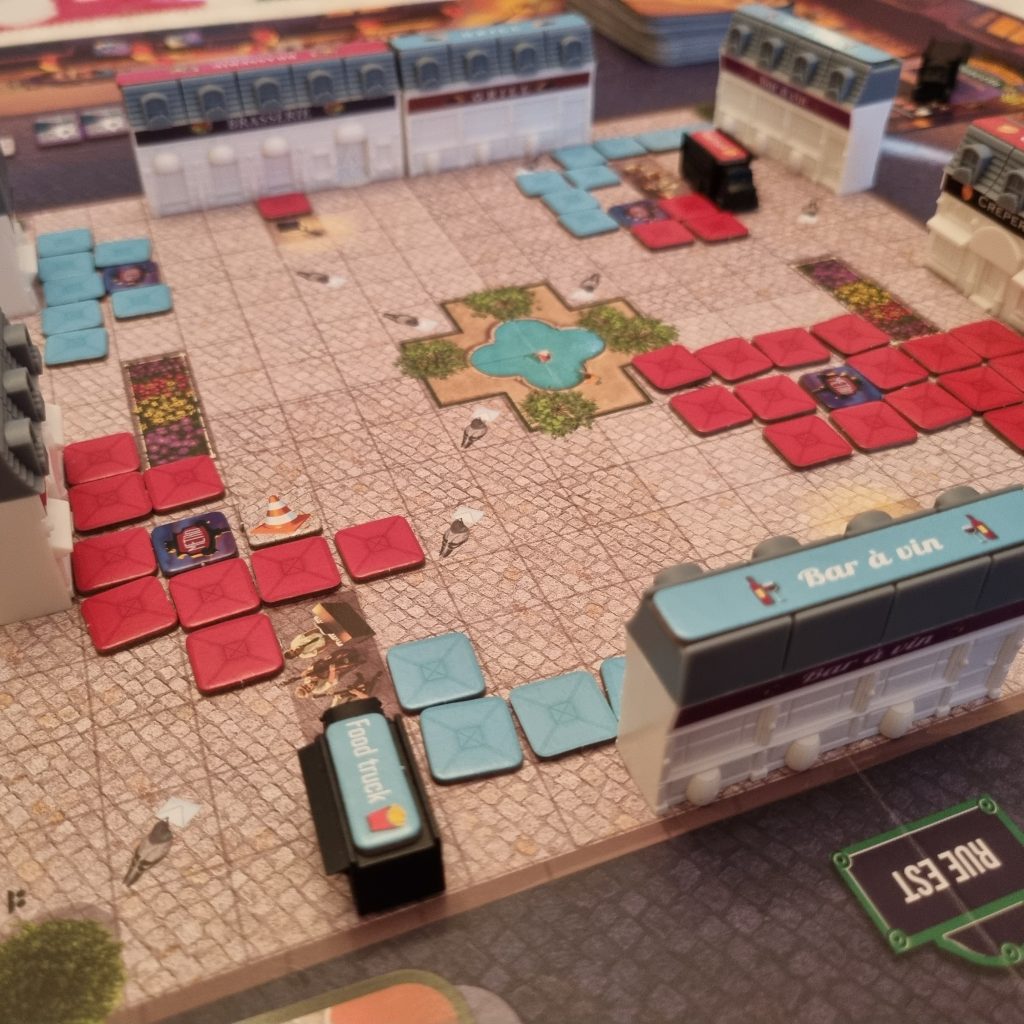
Scrumptious Spaces!
If you have restaurants and terraces packing out the Plaza, you might now also be able to fulfil an objective. So, if you have smashed your own one, place it face up and draw another. If that one looks tasty, by all means keep it. If it looks like you might not achieve it, however, you can always turn it into a public goal. You’ll risk someone else grabbing the VPs, but you won’t get penalised for missing the mark at final scoring.
Play then continues with everybody taking turns until one of the end game triggers are pulled;
- A specified number of restaurants have been built (number depending on player count);
- One player has placed all their terrace tiles from 2 different restaurant types; or
- The Plaza is maxed out and nobody can place any more restaurants or terraces.
Then everybody counts their VPs scored from restaurants and terraces (both values shown on your player board), majorities (3 chances to max out on the single card in play per game), and objectives (note negative marks for incomplete objectives in hand).

Point Salad Course!
Wowza, this game is a feast of peppery point scoring possibilities. Whether your strategy is to race to build up your edible empire, or pave the Plaza for majority and scoring objective VPs, the choice is yours. And how those decisions mix together, not to mention all the different mechanisms, is what makes Dinner in Paris such a tasty experience. A pinch of pigeons, a soupçon of strategic restaurant placement, and a tad of terrace blocking, and you have one satisfying session.
Strangely, for a game that has so much going on, it goes by in a flash. When we play a 2 player game, those 11 restaurants pop up faster than food trucks…….and speaking of which……No! I must wait! I must tell you more about the base game before bringing in the expansion!
Puzzle du Jour!
There are lots of delicious decisions to be made in Dinner in Paris. It feels like a puzzle with lots of interconnecting pieces; income, restaurants, resources, terraces, majorities, objectives. And what you do with one impacts all the others. The options bring balance and we find prevent any one player gaining a runaway lead.
You layer up a game plan like flavours in a trifle. Hoping that the whole dish is more than the sum of its parts. And because of all those different ways to think and play, as well as the variety of scoring objectives and majority cards, every time Dinner in Paris hits the table, it offers fresh, crisp strategic crunch.
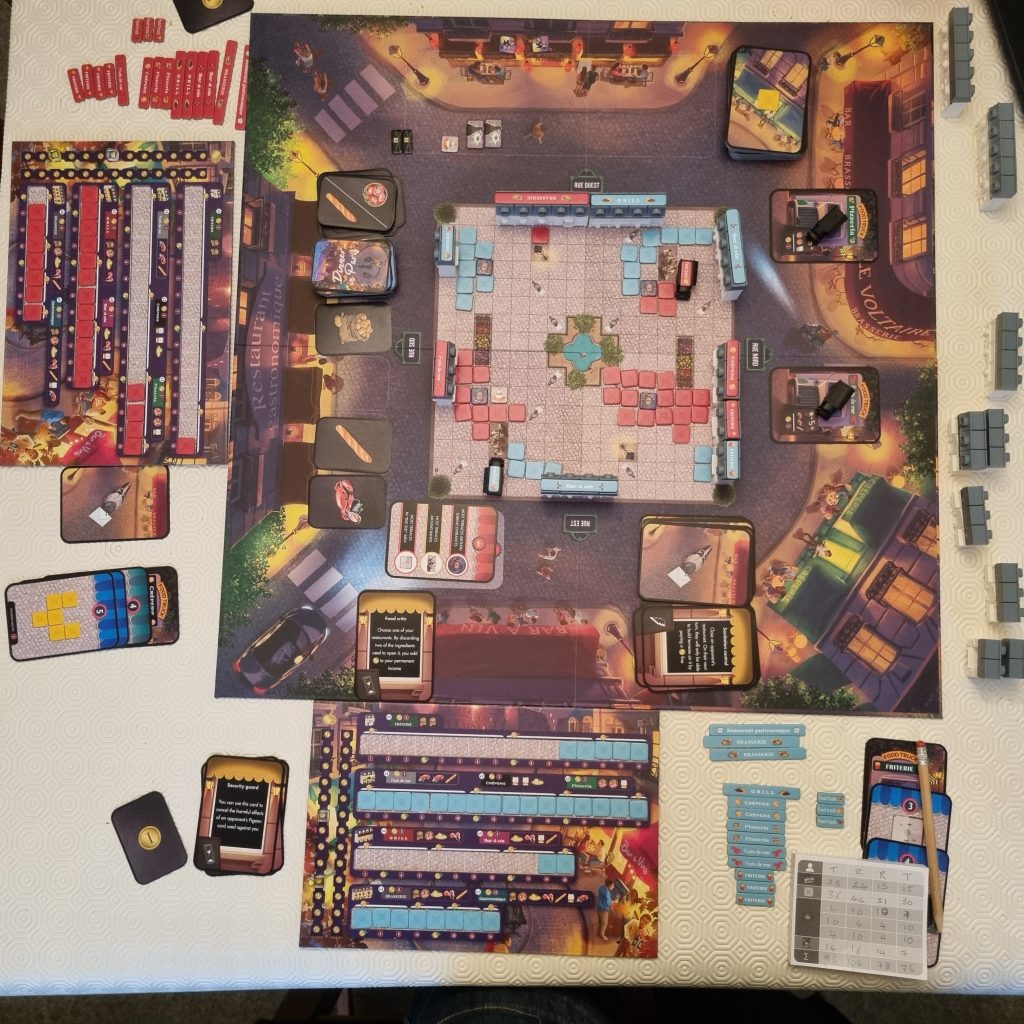
My Compliments to the Components!
Without doubt, the production value in Dinner in Paris is 5 star. The 3D buildings, double layered main board, recessed player boards….everything looks and feels appetising. Especially the player boards. Chef’s kiss to those. The colours pop. They work really well as tracker markers for everything you do and get during the game. The thickness is lovely, and they actually do hold all the teeeeeeennnyyy terrace tiles in place.
There is a bit of prep work before your first game, admittedly. You need to add the stickers onto all the restaurants. And sliding all of those teeeeeennnnyyy terrace tiles into their slots can feel a bit of a chore. Through a lot of playing, our cards are also losing a little of their black colouring around the edges. But those are the only sour notes so far as we are concerned, and I can’t really penalise a game for our clumsy riffles, or its own success!
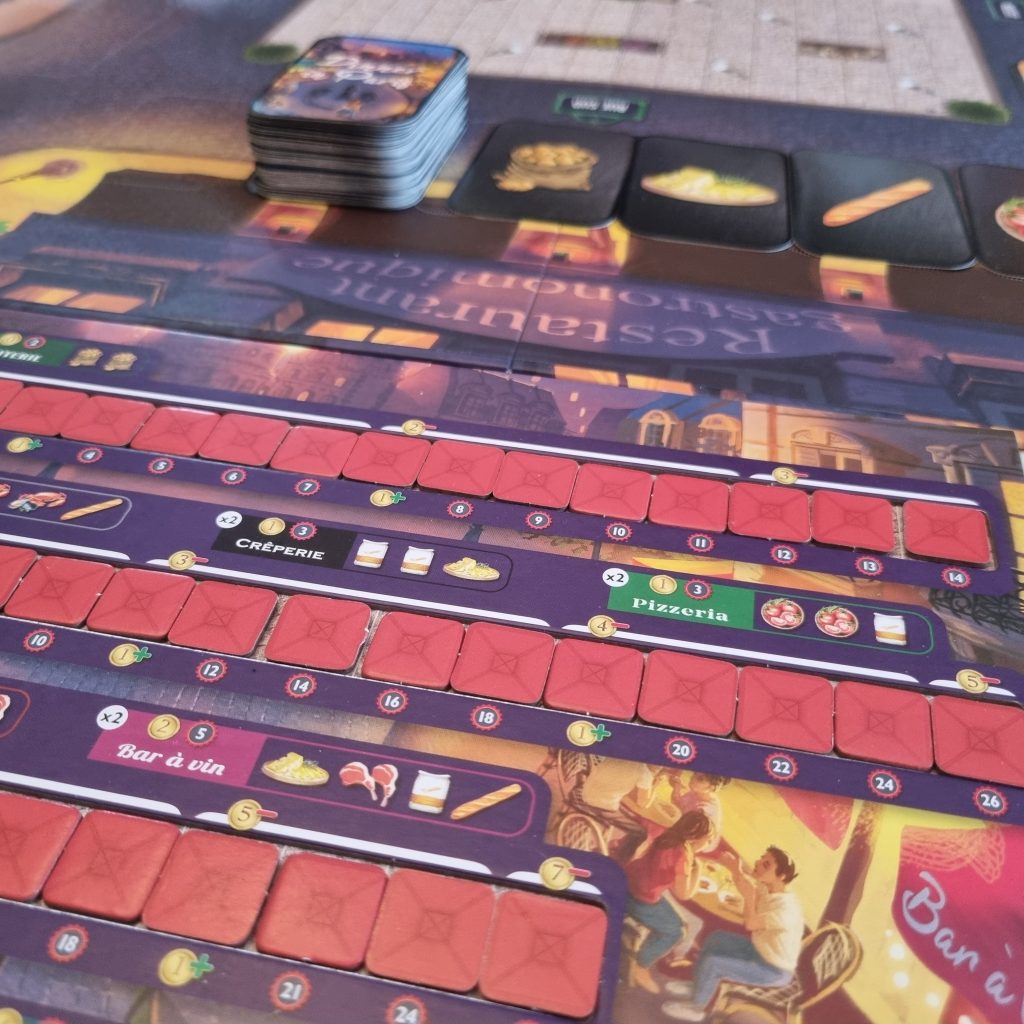
Table For One?
No denying it, I am un peu disappointed that there is no automa for solo play. But again, that is because I enjoy the game so much that I want to be able to play even if ShadowMeepleMedia is not around to break bread with me (or over my head!). But I suppose that carries on the theme of the game. Nobody really wants to be a nobby no mates when dining in the romance capital of the world!
Having said that, quite a lot of the game play in Dinner in Paris focuses on your own plans. You can meddle with somebody’s terraces which could mess up their chances to score objectives or gain majority bonuses at final scoring. But with your own set of buildings and terrace tiles, you can fall into a semi solitary style of play. And that’s fine. There’s more than enough going on in the race to be the richest restaurateur.
But. And this is a Big Mac sized BUT. If you like throwing a massive spanner in your opponents’ strategy. If you like throwing their plans for player domination into the bin, and watching them rage whilst you laugh over steepled fingers (we do!), then Battle of the Chefs expansion is going to be right up your rue!
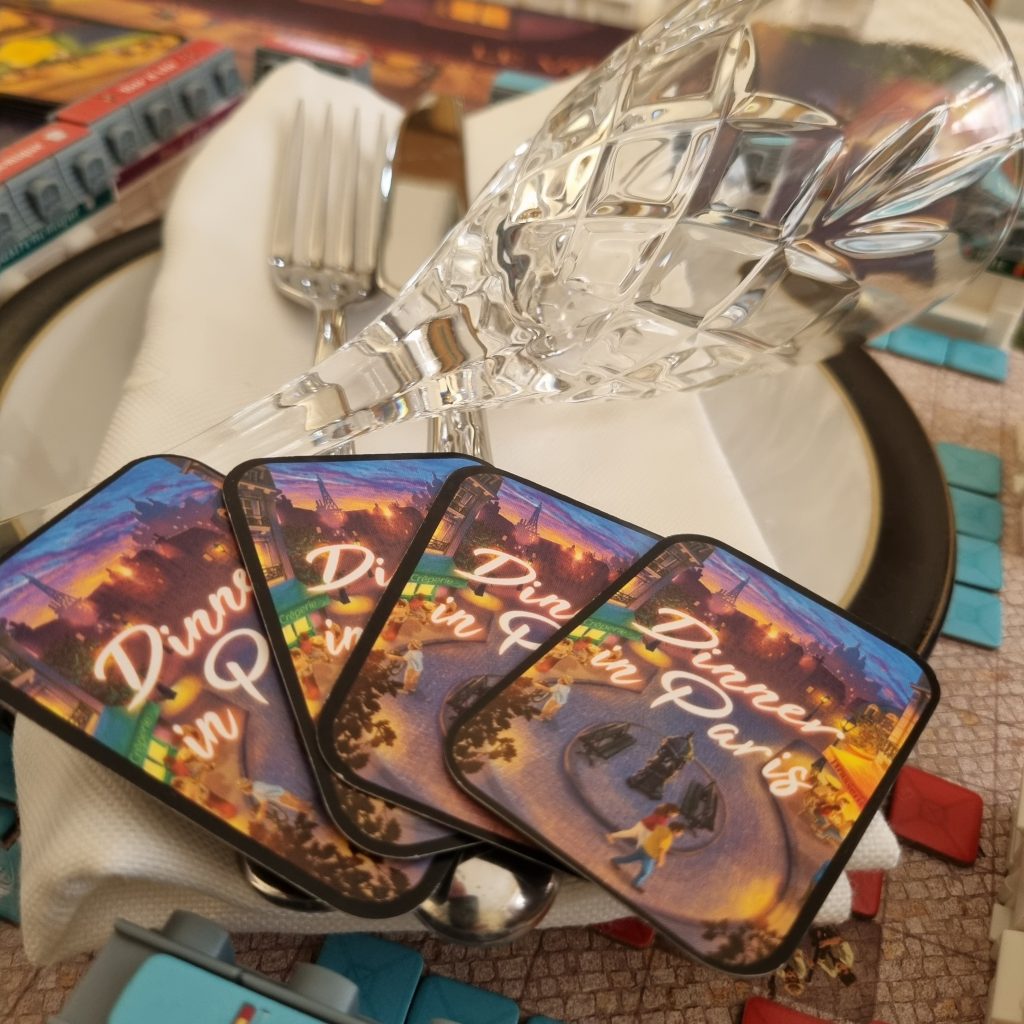
Battle of the Chefs Expansion
Knives out!
Bien sûr! This expansion amps up the feisty flavours in so many ways! And like a tasting menu, you can pick and choose which new nefarious ones to add when you are ready to rumble in the restaurant jungle!
The Mild Menu suggests the extra 24 Pigeon Cards be shuffled in with the gentle base birds. Spicy Menu offers to ramp up the heat by removing some of the original cards and adding in all the new ones. But Explosive Menu is one extra hot pigeon wing; only the new prickly pigeon cards are in play in the game. And these new sky-rats have got some glorious gumption.
No longer just carriers of goodies and juicy extras, although there are new ones of these too including additional turns, stealing cards, security guards, and upping income. These piquant pigeons now cause chaos in lots of clever ways. Closing down restaurants, soiling your opponents’ pristine terraces with pigeon poop and construction cones, turning food bad, and grumpy customers are just some of them. These rotten sky-rats will rain guano all over your opponents’ Parisian parades. And it’s fantastic!
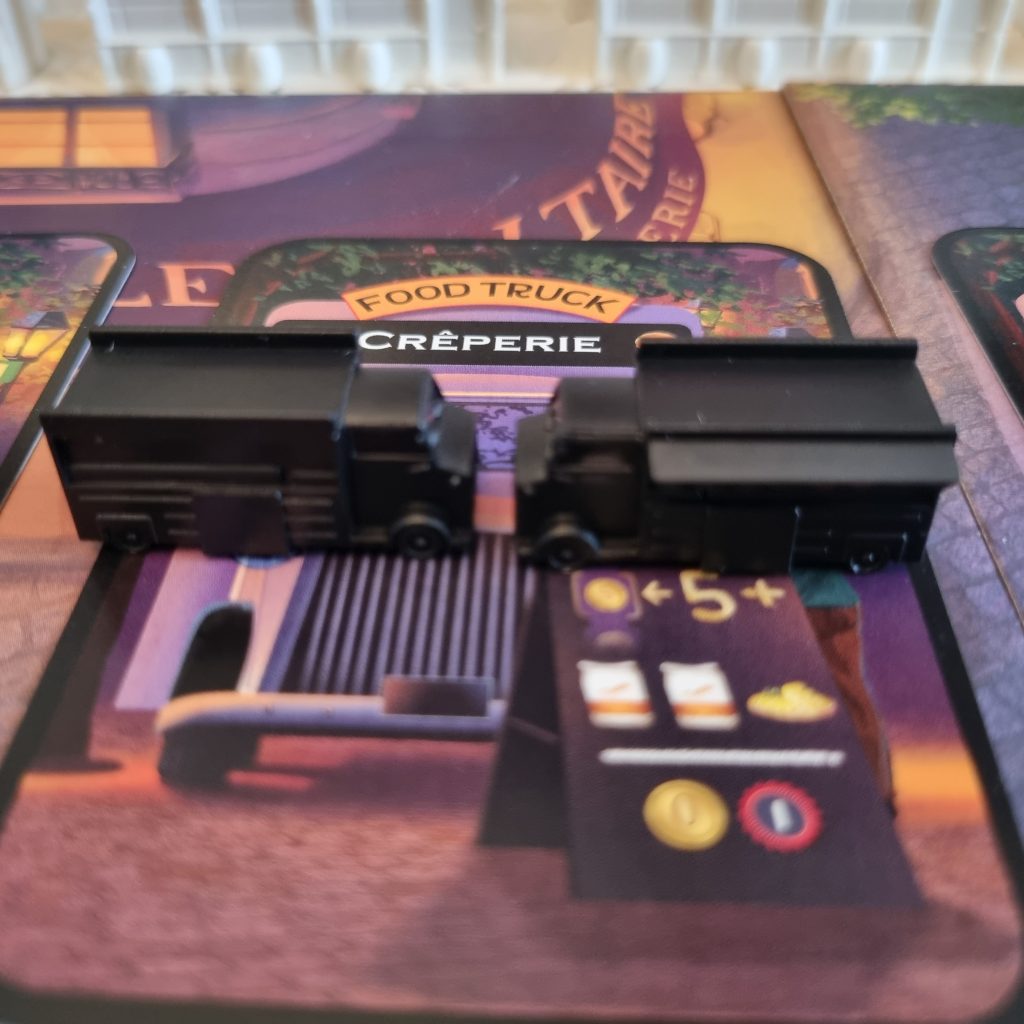
Not only that, however. There are now also food trucks that can be parked up to meddle with majorities and objectives, as well as grant opening bonuses and end game points. They can’t be moved (which is a little disappointing – they are on wheels, and that extra thematic touch and dynamisms to the game space and strategy would have been formidable!). But they are still a great addition and tactic to factor in. Plus there are new subway entrances which work with the new objective and majority cards, bringing even more variety to what is already a highly replayable game. Overall I think the expansion is well balanced – there are certainly some powerful pigeon plays in there, but they are available to all players. And you’ll definitely be able to give as good as you get.
We have now played Dinner in Paris with the expansion a bunch of times, and we simply don’t have time to put all the new elements into effect every game. The first outing did feel a little overwhelming in truth. I wanted to try everything, do everything, cause everything! And then my analysis paralysis kicked in and I didn’t know what I wanted to do.
But then I realised two things.
Firstly, when ShadowMeepleMedia and I play a game against each other, just the two of us, we go for the jugular. And these additional options and chances to scupper each other’s plans are exactly what we want when we play a meaner head to head game. I don’t think we will go back to anything less than Explosive Menu on a Dinner in Paris date.
Secondly, having all these options but knowing that you won’t need to deploy them all (or even get a chance to) takes the pressure off. Similarly, knowing that you can play without any of them – handy if you have players round the table who are less into direct conflict and more about the strategic slow cook! – makes Dinner in Paris a highly adaptable and versatile game.
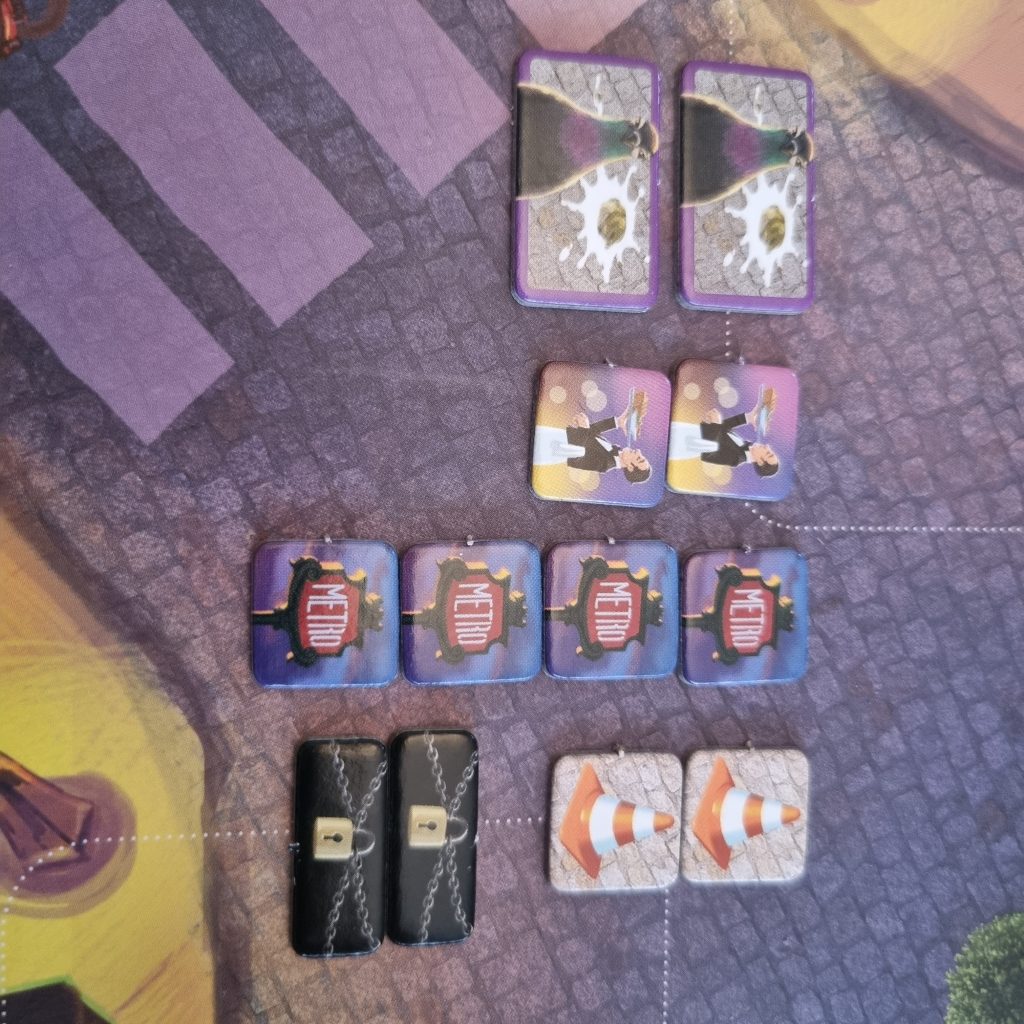
We finished our first portion of Dinner in Paris hungry for more. And even when our bellies are full from a hearty helping of this game, we can’t wait to reserve a table for another playdate.
If you think Dinner in Paris could be a game for you, why not check out the lovely folks at Out of Town Games here
Please note that a copy of this game was kindly provided by the publishers for review. I am not paid for my comments, however, and all opinions are my own.
I am also not affiliated to or sponsored by any retail store.

